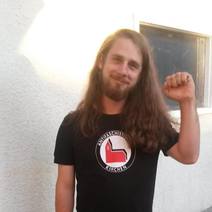Rock! Paper! Scissors!
Tools for anarchist + Christian thought and action
Vol 1. No. 2
Liberation for Every Body:
Toward New Futures with Other Animals
Liberation for Every Body:
Toward New Futures with Other Animals
Guest editor: Nekeisha Alayna Alexis
Photo courtesy Jo-Anne McArthur / We Animals.



 RSS Feed
RSS Feed